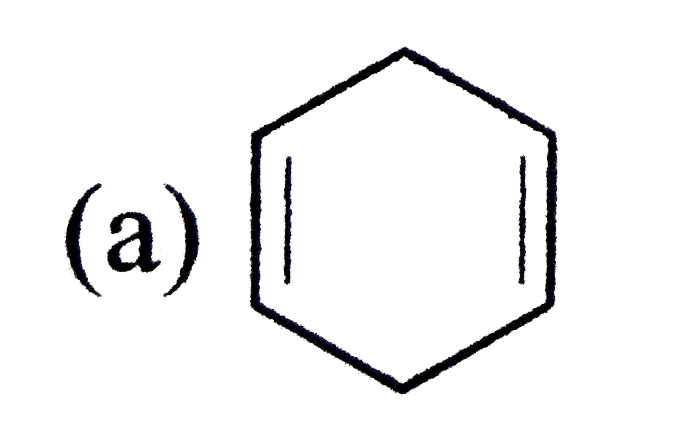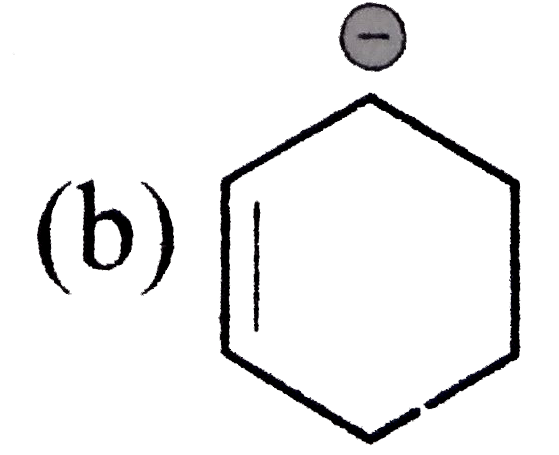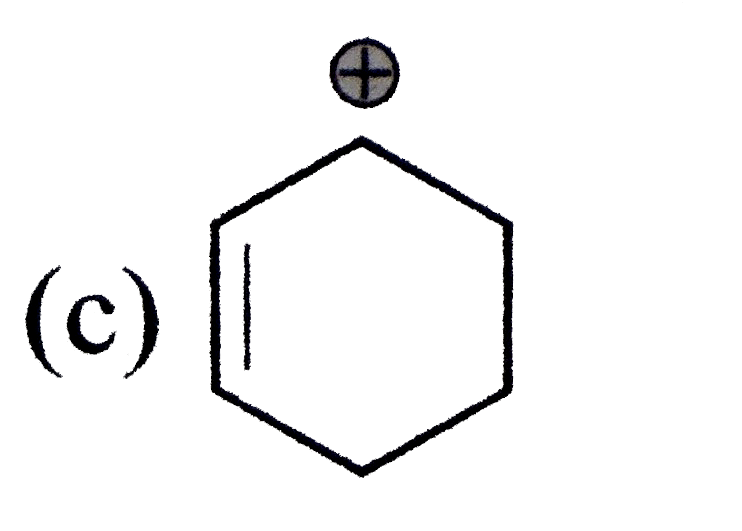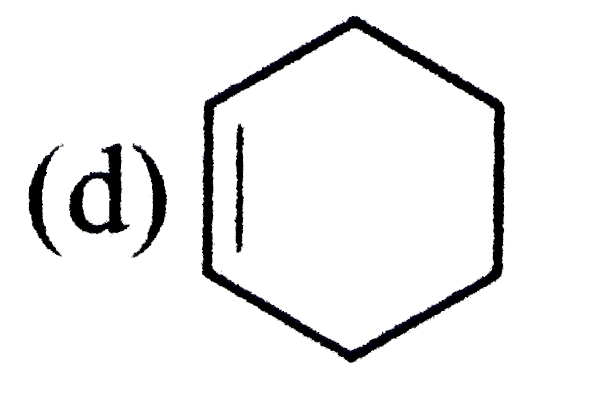Which of the following species cannot show resonance?




The correct Answer is:A
To determine which of the given species cannot show resonance, we need to analyze the structures of each species based on the presence of conjugated pi bonds and lone pairs that can participate in resonance.
1. Identify the Species:
- We have four species labeled A, B, C, and D. We will evaluate each one for the possibility of resonance.
2. Analyze Species A:
- Structure: Assume it has a double bond followed by single bonds and another double bond.
- Resonance Check: For resonance to occur, there must be conjugation (alternating double and single bonds) and the presence of charges or lone pairs. In this case, if there are no charges or lone pairs, resonance cannot occur.
- Conclusion: Species A cannot show resonance.
3. Analyze Species B:
- Structure: Assume it has a charge (negative) and a conjugated system.
- Resonance Check: The negative charge can be delocalized through the pi bonds, allowing for resonance structures to be formed.
- Conclusion: Species B can show resonance.
4. Analyze Species C:
- Structure: Assume it has a conjugated system with a charge (positive or negative).
- Resonance Check: Similar to B, the charge can be delocalized, allowing for resonance structures.
- Conclusion: Species C can show resonance.
5. Analyze Species D:
- Structure: Assume it has a single double bond with no adjacent pi bonds or charges.
- Resonance Check: Without conjugation or charges, there is no possibility for resonance.
- Conclusion: Species D cannot show resonance.
6. Final Answer:
- The species that cannot show resonance are A and D.
- We have four species labeled A, B, C, and D. We will evaluate each one for the possibility of resonance.
- Structure: Assume it has a double bond followed by single bonds and another double bond.
- Resonance Check: For resonance to occur, there must be conjugation (alternating double and single bonds) and the presence of charges or lone pairs. In this case, if there are no charges or lone pairs, resonance cannot occur.
- Conclusion: Species A cannot show resonance.
- Structure: Assume it has a charge (negative) and a conjugated system.
- Resonance Check: The negative charge can be delocalized through the pi bonds, allowing for resonance structures to be formed.
- Conclusion: Species B can show resonance.
- Structure: Assume it has a conjugated system with a charge (positive or negative).
- Resonance Check: Similar to B, the charge can be delocalized, allowing for resonance structures.
- Conclusion: Species C can show resonance.
- Structure: Assume it has a single double bond with no adjacent pi bonds or charges.
- Resonance Check: Without conjugation or charges, there is no possibility for resonance.
- Conclusion: Species D cannot show resonance.
- The species that cannot show resonance are A and D.
Topper's Solved these Questions
- BOOK - A2ZCHAPTER - SOME BASIC PRINCIPALS OF ORGANIC CHEMISTRYEXERCISE - Acid And Basic Strength29videos
SOME BASIC PRINCIPALS OF ORGANIC CHEMISTRY
- BOOK - A2ZCHAPTER - SOME BASIC PRINCIPALS OF ORGANIC CHEMISTRYEXERCISE - Bond Fission, Reagents, Reactive Intermediates And Their Stability31videos
SOME BASIC PRINCIPALS OF ORGANIC CHEMISTRY
- BOOK - A2ZCHAPTER - SOME BASIC CONCEPTS OF CHEMISTRYEXERCISE - Section D - Chapter End Test30videos
SOME BASIC CONCEPTS OF CHEMISTRY
- BOOK - A2ZCHAPTER - STATES OF MATTEREXERCISE - Section D - Chapter End Test30videos
STATES OF MATTER
Similar Questions
Knowledge Check
- Question 1 - Select One
Which one of the following does not show resonance?
ACarbon dioxideBBenzeneCNitromethaneDPropane - Question 2 - Select One
Which of the following species cannot have conjugate base ?
AHSO−14BHPO−24CPO−34DH2PO−2 - Question 3 - Select One
Which one of the following species cannot act as both Bronsted acid and base ?
AH2OBHCO−3CHSO−4DNH−2
Which of the following molecule does not show resonance
HCOO−
Benzene
ClO−4
HClView SolutionWhich of the following compound can show resonance?
View SolutionWhich of the following species does not show aromaticity?
View SolutionWhich of the following molecules cannot show geometric isomerism ?
View SolutionWhich of the following is not true about resonance ?
View Solution


